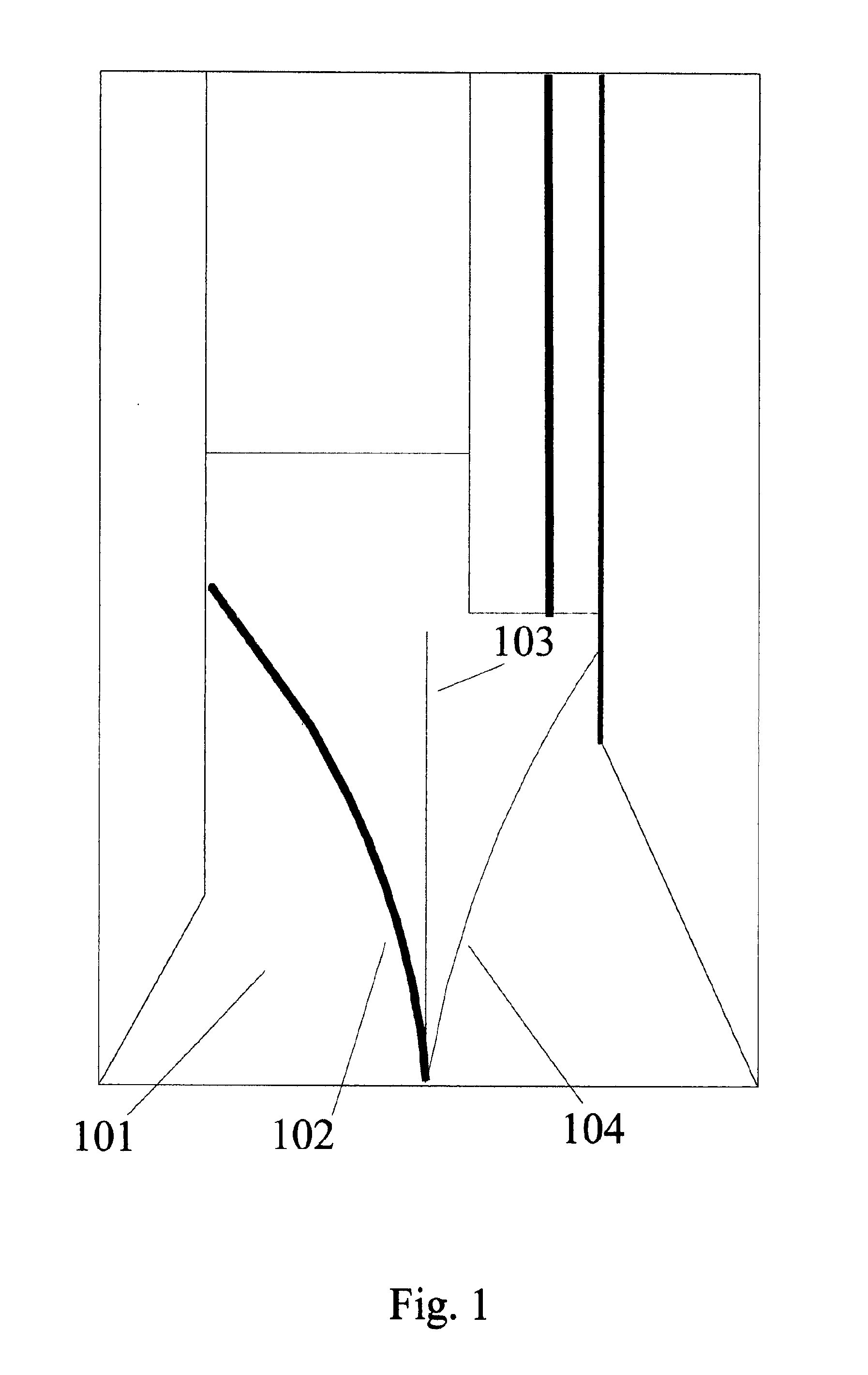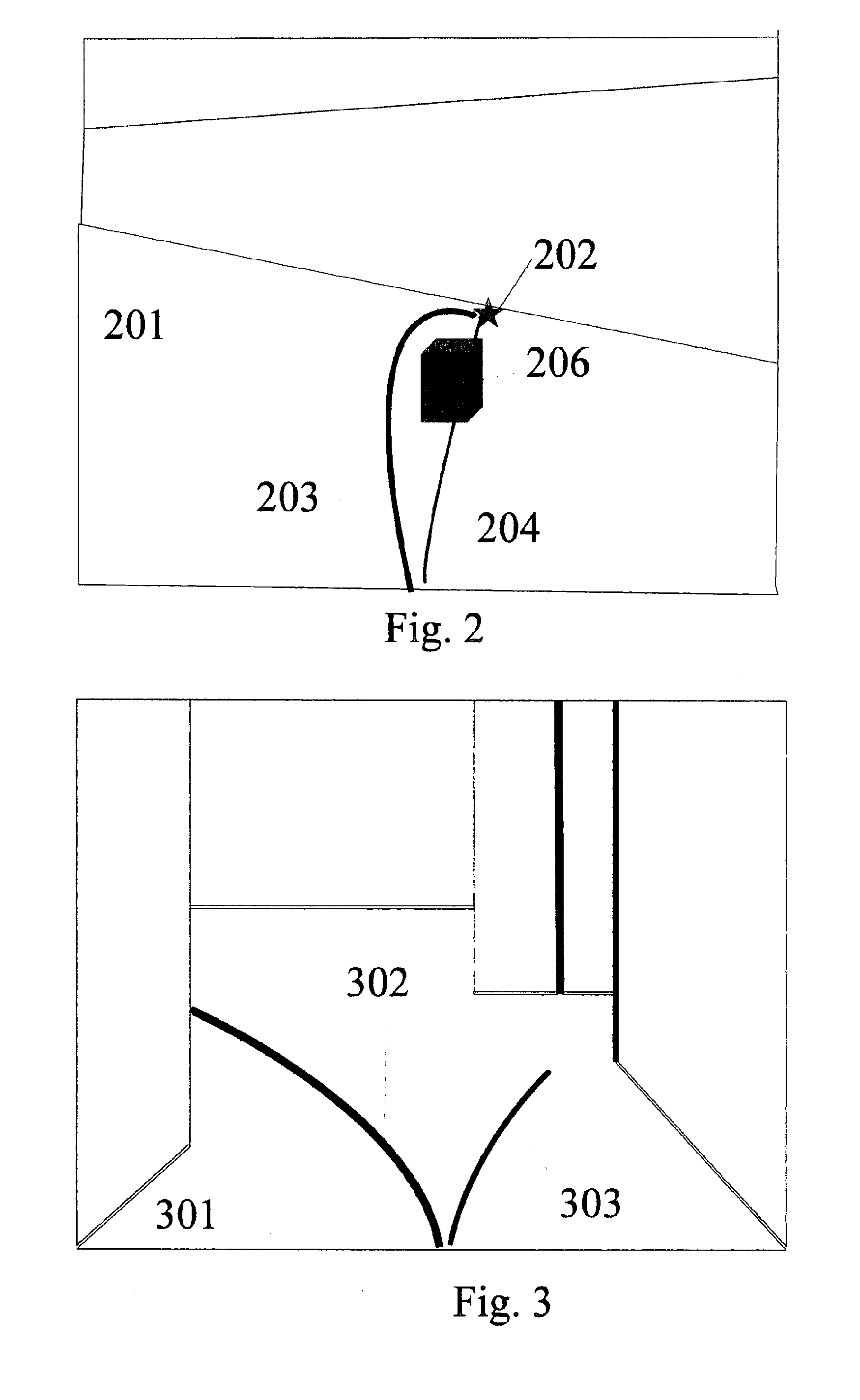Method and apparatus for path planning, selection, and visualization
a robotic and path technology, applied in the field of robotics, can solve the problems of difficult assignment of new movements, difficult to quickly discern the orientation of the robot at any particular location along the travel path, and impose a number of limitations, so as to simplify the process of navigating the device through space, respond faster, and facilitate teleoperation.
- Summary
- Abstract
- Description
- Claims
- Application Information
AI Technical Summary
Benefits of technology
Problems solved by technology
Method used
Image
Examples
Embodiment Construction
[0017]The present invention is a new and improved method and apparatus for robotic path planning, selection, and visualization.
Path-Planning Image Superposition
[0018]FIG. 1 is a exemplary embodiment of the invention displaying a path spline to the operator. An image of a hallway is shown to an operator 101. The operator can control a path spline 102 by using a user interface to twist it, in this case to the left. User interface techniques known in the art can control the orientation of the path spline. Alternative path splines are also shown. A straight path 103 occurs when the spline is not curved. The spline can also be made to curve to the right 104. A remotely controlled robot is programmed to move in accordance with the path the spline curve maps onto the floor. In an alternative embodiment, the path taken by the robot may be displayed as a straight line from the robot's current location to a desired destination. In yet another embodiment, the path taken by the robot is compose...
PUM
 Login to View More
Login to View More Abstract
Description
Claims
Application Information
 Login to View More
Login to View More - R&D
- Intellectual Property
- Life Sciences
- Materials
- Tech Scout
- Unparalleled Data Quality
- Higher Quality Content
- 60% Fewer Hallucinations
Browse by: Latest US Patents, China's latest patents, Technical Efficacy Thesaurus, Application Domain, Technology Topic, Popular Technical Reports.
© 2025 PatSnap. All rights reserved.Legal|Privacy policy|Modern Slavery Act Transparency Statement|Sitemap|About US| Contact US: help@patsnap.com



